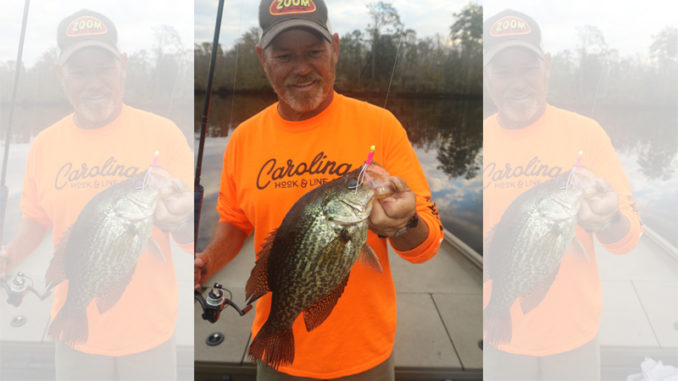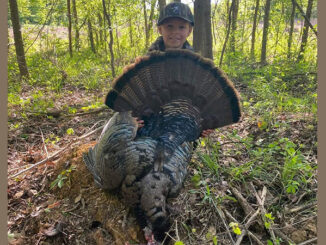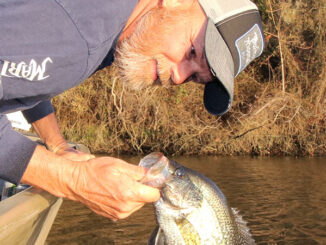
Spring fishing great in coastal river
For crappie fishermen, looking forward to spring is what gets them through the winter. And while the big reservoirs take center stage, the Waccamaw River from Conway, S.C., to Georgetown, S.C., is a hidden gem for slab seekers.
Guide Todd Vick of Murrells Inlet’s Fishin’ Freshwater Charters said this is easily one of the most-overlooked crappie waters in the Palmetto State. That makes his job easy. It doesn’t take long to impress his clients, many of whom scarcely entertain the thought of fishing in freshwater when they’re so close to the coast.
Depending on the weather, Vick (843-333-8200) said crappie can be in one of two modes throughout this month.
“Some crappie will be spawning, and some will be in post-spawn mode. It all depends on the water temperature. And that can change a lot this month, as cold fronts and warming trends are common,” he said.
It’s always good to have live bait
The spawning fish will be shallow, and anglers can catch them around downed trees close to the river banks. And while Vick will use jigs a little this time of year, he never hits the Waccamaw River without live minnows.
“You just can’t beat live bait for these fish, especially when they are being finicky, which is common around the spawn,” he said.
Vick fishes with 9-foot panfish rods with ultralight spinning reels spooled with 6-pound line, slip floats and No. 4 hooks. He uses just enough weight to get the line to slide through the cork properly. Searching the banks for surface weeds, downed trees and other debris, he puts his minnow into every nook and cranny he can find in that structure.
“You can have your minnow 6 inches away, and they won’t bite,” he said. “So you have to be patient and cover this water thoroughly. You should find crappie on that type of debris, so if you’re not getting bit, you just need to make sure you’re covering every inch of the area.”
Other than these locales, Vick also looks for post-spawn crappie in deeper holes. These fish may be tougher to find, but they are just as willing to eat.
Remember that crappie feed up
“There is some deep water in the Waccamaw River, and it’s tidal, so at high tide, you can have some holes that are 20 feet and even deeper,” he said. “The post-spawn crappie will go deep, so having a good depth finder will help. You’ll find plenty under floating docks; just pitch your slip cork as close to the dock as you can. Adjust the cork depth according to your depth finder, and don’t be happy with just one cast to each side of the dock. You’ve got to work every inch of the dock. These fish won’t eat unless you put that minnow right where they want it,” he said.
And no matter what the water depth is, Vick said you should always put your bait a foot or so above where the fish are holding.
“It’s very rare for crappie to swim down to catch a meal. They will swim up a foot or two, so if you’re marking fish at 20 feet, set your depth at 19 feet. Then adjust accordingly until you start to catch fish,” he said.




